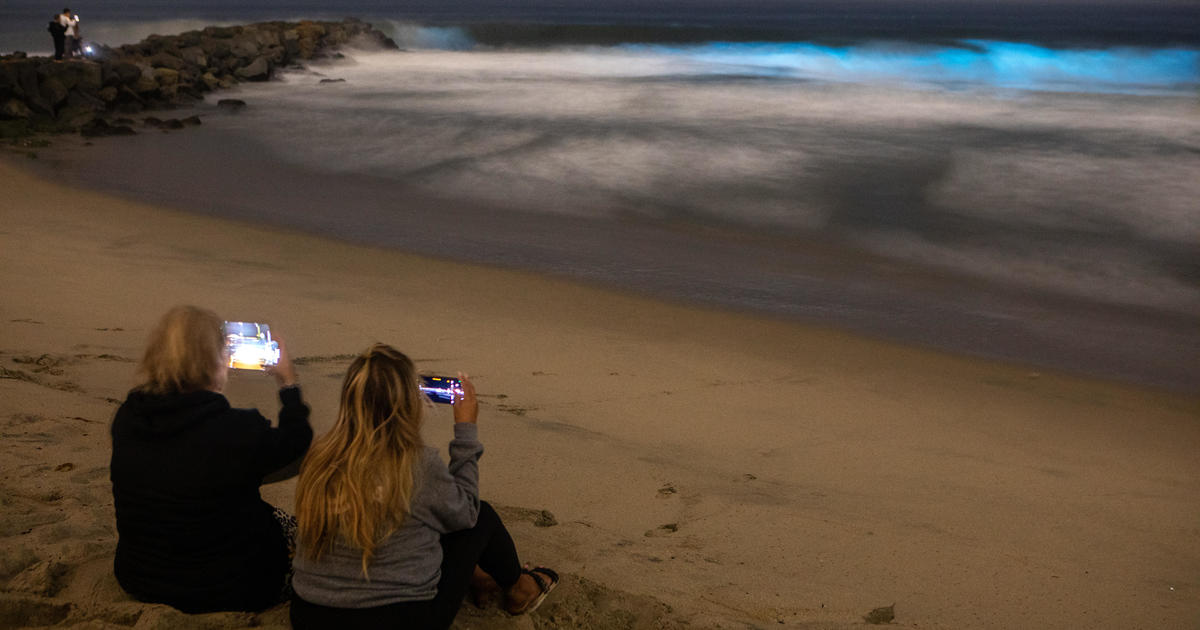Movie Reviews
Film Review: Dolphin (2023) by Bae Du-ri

“Go to Seoul and die, jerk”
Written, directed and edited by Bae Du-ri as a school project at the Korean Academy of Film Arts, “Dolphin” premiered last year at Jeonju and was released in Korean theaters this week.
The movie revolves around Na-young, a 35-year-old journalist at a local newspaper, who is definitely stuck in the small-town life she has experienced all her life, with her main focus being taking care of her mother, Jeong-ok, younger brother, Seong-woon and her friends. Na-young had a rather dramatic childhood, but through her routines and the simplicity of life in the particular location, she has found a degree of harmony. Everything, however, starts changing, when her mother informs her that she wants to sell the house Na-young grew up in, her brother decides to move to Seoul after finishing school, and Hae-soo, a man her age, relocates from Seoul. As Na-young cannot handle change, the potential alterations have her struggling intensely, until she discovers bowling.
Bae Du-ri directs a film that draws from personal experience, in a rather unusual coming-of-age story, since it focuses not on a teenager, but on a woman in her mid-30s. Without falling into the clutches of melodrama, as so frequently happens in Korean movies, she deals both with what causes people to be afraid of change, and how one can find relief from this type of agony. Regarding the first aspect, Na-young’s rather dramatic past as a kid is presented as the main source, which is actually revealed gradually, in timely moments within the narrative, with the director eloquently stating that, for her protagonist, life could have been much harder and the one she has now does look quite good for her. On the other hand, and while her mentality is somewhat justified in that fashion, the fact that she cannot cope with others moving on is a sign of immaturity, with the story focusing on how Na-young tries to overcome it.
And here comes the second, rather unusual element in the film, with bowling becoming a factor, and Bae exploring the sport in its amateur level quite thoroughly, as the particular alley and her proprietor function in the way bars and bartenders frequently function in cinema. That Na-young finds solace, a way out of her problems, and someone to talk to is a rather appealing element within the narrative, also adding a very entertaining sport element to an indie drama that actually stands out due to this part.
The comments, however, do not stop in Na-young and her effort to cope with change. The concept of the blended family is also central to the story, as much as the way people in small communities react to “outsiders” and the reasons the population of young adults in such areas is diminishing. That the characters of the movie mirror these comments is a testament to the quality of the writing, since Bae manages to both make her audience empathize with them and creates a chemistry that results in a number of interesting comments.
This aspect also owes a lot to the acting, which is one of the main sources of the realism that permeates the movie. Kwon Yu-ri as Na-young highlights her frustration excellently, both in her calm moments and the more rare ones, when she lashes out. The same applies to Kil Hae-yeon’s Jeong-ok, who does let’s her anger show more frequently, and Hyeon Woo-seok’s Seong-woon, who is actually the calmest one in the whole movie, despite his age. Both the acting, and the bottled up sentiments of the protagonist find their apogee in a scene close to the end, when no one can control their feelings anymore, in probably the most memorable sequence in the whole movie.
Subscribe to AMP newsletter by clicking on the image below
Kim Him-chan’s cinematography follows the realistic lines of the narrative, although the bowling parts are occasionally impressive, in a rather welcome change from the usual approach of Korean arthouse dramas, which is also found in the pace. That the movie lasts for 90 minutes is another rather welcome aspect that should be attributed to Bae’s editing, which results in an economical approach that does so by avoiding the usual melodramatic shenanigans.
“Dolphin” is a gem of a film, one of the rare Japanese indies that manages to stray away both from the melodrama and the “Hong Sang-soo recipe”, retaining both its entertainment and its contextual richness for the whole of its duration.

Movie Reviews
Movie Review: Twisters – Kenbridge Victoria Dispatch

Movie Review: Twisters
Published 11:15 am Friday, July 26, 2024
1 of 3
Let me immediately cut to the chase (pun intended) and answer the question you’re all wondering. TWISTERS is a fun and entertaining summer blockbuster, but it in no way holds a candle to its predecessor TWISTER (1996). Still, the CGI is intense, the sound design is loud and immersive, and the lead performances — especially from Glen Powell — are sure to wow.
Following a horrible tragedy, meteorologist Kate Carter (Daisy Edgar-Jones) has spent years out of the storm chasing business. She now lives in the largely tornado-less New York City, using her innate understanding of storm systems to direct weather alerts. But when her old friend Javi (Anthony Ramos) begs her to join his privately-funded start-up, which is designed to use military-grade radars to learn more about tornadoes and save communities in Oklahoma, she agrees to give him a week of her time. It’s not too long before “tornado wrangler” influencer Tyler Owens (Glen Powell) enters the scene with his ragtag group of weather enthusiasts, creating a competition between scientific research and entertainment. Each group races to be the first on the scene, with Kate and Javi seeking to model the tornado and Tyler trying to get the most likes on social media. But can the two groups find a way to work together or will the competition be more vicious than the tornadoes?
I am admittedly judging myself for caring too much about a summer blockbuster’s plot, because that’s not really what any of us sign up for with these films. But the various encounters with tornadoes begins to feel slightly repetitive and creates pacing issues, making a two-hour film feel like its runtime. And for some reason, it seems like there is something missing when it comes to portraying the sheer terror of experiencing F5 tornadoes, unlike the original film; the main set pieces were not as memorable.
The film does little to make you care about whether the characters live or die, relying on Glen Powell and Daisy Edgar-Jones’s chemistry and natural charisma to do the heavy lifting. The second Powell steps out of his gigantic truck, with his cowboy hat and belt buckle sparkling in the sun… sorry, I just lost my train of thought… and that’s what TWISTERS is hoping. Powell’s magnetism is sure to knock you off your feet and distract you from the film’s middling plot. And while Edgar-Jones’s performance is more muted, due to her character’s battle with PTSD, she brings an important level of humanity to the film and a character to both see yourself in and root for. More than that, her chemistry with Powell is off the charts and will certainly leave you wanting their relationship explored more in a sequel. The supporting characters are not given much to work with and as such, don’t really engender much concern when they are in deadly situations.
One element of TWISTERS I liked more than TWISTER is it showed the emotional and financial toll tornadoes ravage on communities. Of course, that is an element of the first film, but TWISTERS does a great job showcasing the speed in which tornadoes can overtake and devastate a community, both in loss of life and loss of property. This, juxtaposed with the “fun” in chasing storms brings a real human element to the film. I also want to give a shoutout to the movie not having any sad animal scenes (apart from a possible run-in with a chicken). So for all of you sickos excited to see another flying cow, this isn’t for you.
TWISTERS is the exact kind of movie you need to see in a theater so you can get the full experience. Where else can you admire the cinematography, get immersed in the sound design, and lose yourself in Glen Powell’s cowboy hat and million dollar smile? I saw it in a Dolby theater and was blown away.
There is no end credit scene.
My Review: B
Movie Reviews
Raayan Telugu Movie Review, Dhanush, Sundeep Kishan

Movie Name : Raayan
Release Date : July 26, 2024
123telugu.com Rating : 2.75/5
Starring : Dhanush, Sandeep Kishan, Kalidasu Jairam, Aparna Balamurali, SJ Surya, Saravanan
Director : Dhanush
Producers : Kalanithi Maran
Music Director: A. R. Rahman
Cinematographer: Om Prakash
Editor: Prasanna GK
Related Links : Trailer
Raayan is Dhanush’s 50th film as an actor and his second as a director. The film released in cinemas worldwide today amid moderate expectations. This review explores how the film performed. Read on.
Story:
Kaartavaraayan aka Raayan (Dhanush), enjoys a quiet life in Anjanaouram with his brothers Muthuvelaraayan (Sundeep Kishan), Maanikyaraayan (Kalidas Jayaram), and sister Durga (Dushara Vijayan). Their tranquility is shattered when Muthu gets into a fight with the local don Dorai’s (Saravanan) men, setting off a dangerous rivalry. Sethuram (SJ Suryah), another gangster, steps into the fray with a deadly plan to eliminate Raayan. What drives Sethuram’s desire to kill Raayan? Who is Raayan beneath the surface? What is his true purpose? The film unveils all these secrets.
Plus Points:
Expectations were high when the film was announced, as it is directed by Dhanush. Besides his intense acting, Dhanush demonstrates his directing skills neatly.
Sundeep Kishan takes on a significant role and delivers an exceptional performance with his portrayal of a character with grey shades. His scenes with Dhanush and Aparna Balamurali are enjoyable.
Dushara Vijayan is unexpectedly strong in her role, which becomes more intense in the second half. SJ Suryah, as usual, gives an exemplary performance. Aparna Balamurali, Selvaraghavan, and others perform decently in their respective roles.
Minus Points:
The movie doesn’t offer much that’s new for viewers. Dhanush presents a routine story with very few twists, but the slow-paced screenplay diminishes the story’s impact.
There is no strong hook to illustrate the conflict between SJ Suryah and Dhanush. The reasons provided are unconvincing, and SJ Suryah’s potential is not fully utilised.
The film caters mainly to action movie enthusiasts and may not be suitable for family audiences due to its violent content.
Prakash Raj’s character lacks originality, and Varalaxmi Sarathkumar has minimal relevance to the plot. Additionally, including more emotional depth might have improved the film. The second half feels dragged out, with unnecessary scenes added to extend the film.
Technical Aspects:
As a director, writer, and actor, Dhanush displays his skills, but as a writer and director, he could have crafted a more engaging story. The sluggish second half could have been tightened.
Given the high expectations, AR Rahman’s work is noticeable but slightly disappointing. The cinematography by Om Prakash is decent, while editing by Prasanna GK could have been better. Production values are satisfactory.
Verdict:
On the whole, Raayan offers nothing new but remains passable due to the strong performances by Dhanush, Sundeep Kishan, Dushara Vijayan, and SJ Suryah. The action scenes are adequate but not suitable for family audiences. The lack of a strong hook point and a dragging second half are notable drawbacks. If you still decide to watch it, manage your expectations accordingly.
123telugu.com Rating: 2.75/5
Reviewed by 123telugu Team
Click Here For Telugu Review
Articles that might interest you:
Movie Reviews
Deadpool & Wolverine English Movie Review|Ryan Reynolds,Hugh

Movie Name : Deadpool & Wolverine
Release Date : July 26, 2024
123telugu.com Rating : 3.25/5
Starring : Ryan Reynolds, Hugh Jackman, Emma Corrin, Matthew Macfadyen, Jon Favreau, Morena Baccarin, Rob Delaney, Leslie Uggams, and others
Director : Shawn Levy
Producers : Kevin Feige, Lauren Shuler Donner, Ryan Reynolds, and Shawn Levy
Music Director: Rob Simonsen
Cinematographer: George Richmond
Editor: Dean Zimmerman and Shane Reid
Related Links : Trailer
After a six-year hiatus, the eagerly awaited third installment of the R-rated Deadpool franchise, Deadpool & Wolverine, has hit theaters amid considerable excitement. Dive into our review to discover how it measures up as Deadpool makes his entry into the Marvel Cinematic Universe (MCU).
Story:
Wade Wilson, aka Deadpool (Ryan Reynolds), lives an ordinary life as a used car salesman. On his birthday, he gets captured by the Time Variance Authority’s (TVA) agent Paradox (Matthew Macfadyen), who warns Wade that his world will end in hours. Wade steals Paradox’s Timepad, hops through timelines, and finds Wolverine (Hugh Jackman). They return to the TVA, only to be sent to the Void, a dangerous realm ruled by Cassandra Nova (Emma Corrin), who wants them dead. They escape but learn Cassandra is their only hope to go back to their world. Will she help them? Why did Deadpool wish to team up with Wolverine only? What challenges did they face? Can Wade save his world? What made him lead a normal life? Watch the movie to find out all the answers.
Plus Points:
The long-awaited crossover of Deadpool and Wolverine is finally here, delighting fans who have eagerly anticipated their on-screen pairing. Thanks to Marvel producer Kevin Feige for making this happen. Combining these two distinct characters is a significant triumph for the franchise.
Deadpool returns with his signature foul-mouthed humour, delivering even more witty dialogue and F-bombs than before. His dynamic with the gruff Wolverine adds an extra layer of fun. Ryan Reynolds excels once again in his iconic role.
Hugh Jackman’s return to superhero mode is a treat for his fans. His performance is impressive, with his physical presence and demeanour bringing a strong aura to the role.
The film offers more than just sharp humour and jabs at Disney, X-Men, and even the MCU. It features exhilarating action sequences that are sure to captivate audiences. Watching Deadpool and Wolverine together on screen is worth the ticket price.
The movie is packed with unexpected cameos, creating moments that will make you sit up and pay attention. The fourth-wall-breaking scenes are an added bonus.
Minus Points:
The film has its drawbacks. Like Deadpool himself, it has some imperfections. The storyline is simple and somewhat thin. Given the pairing of these unique superheroes and the TVA connection hinted at in the trailer, a more complex plot might have been anticipated. Instead, the simple narrative can feel underwhelming.
The film introduces a few characters from X-Men and Fantastic Four. While their appearances are appreciated, incorporating more nostalgic moments could have enhanced the experience. The supervillain’s role seems limited due to the focus on the main characters and the constraints of the story.
Expectations for numerous ‘Avengers’ cameos, based on trailers and TV spots, can be disappointing. The post-credit scene, which was anticipated to feature Deadpool breaking the fourth wall, falls short of expectations.
Technical Aspects:
Director and writer Shawn Adam Levy does a solid job, but there is room for more to elevate the excitement surrounding the main characters. The screenplay is adequate but appears sluggish at times despite the short runtime.
George Richmond’s cinematography is visually appealing, and the VFX work is solid with effective color grading. Editing by Dean Zimmerman and Shane Reid is satisfactory, and production values are high. The music by Rob Simonsen is cool.
The Telugu dubbing is excellent, thanks to dialogue director BV Ramanayya and translator Veerri Venugopal Reddy. They adeptly weave in trending social media lingo and popular movie catchphrases, adding a layer of contemporary humour that enriches the film’s overall experience.
Verdict:
On the whole, Deadpool & Wolverine is an entertaining superhero movie for casual viewers and a thrilling ride for fans of the characters and the Deadpool franchise. Ryan Reynolds and Hugh Jackman deliver solid performances, and the film’s humour, dialogues, and action scenes provide plenty of entertainment. Nonetheless, the film lacks a compelling narrative and emotional depth, and its mature humor may limit its appeal to a specific audience. Don’t wait; secure your tickets and catch this film in the best theater for an unforgettable experience!
123telugu.com Rating: 3.25/5
Reviewed by 123telugu Team
Click Here For Telugu Review
Articles that might interest you:
-

 World1 week ago
World1 week agoOne dead after car crashes into restaurant in Paris
-

 Midwest1 week ago
Midwest1 week agoMichigan rep posts video response to Stephen Colbert's joke about his RNC speech: 'Touché'
-

 News1 week ago
News1 week agoVideo: Young Republicans on Why Their Party Isn’t Reaching Gen Z (And What They Can Do About It)
-

 News1 week ago
News1 week agoIn Milwaukee, Black Voters Struggle to Find a Home With Either Party
-

 Politics1 week ago
Politics1 week agoFox News Politics: The Call is Coming from Inside the House
-

 News1 week ago
News1 week agoVideo: J.D. Vance Accepts Vice-Presidential Nomination
-

 Movie Reviews1 week ago
Movie Reviews1 week agoMovie Review: A new generation drives into the storm in rousing ‘Twisters’
-

 World1 week ago
World1 week agoTrump to take RNC stage for first speech since assassination attempt











/cdn.vox-cdn.com/uploads/chorus_asset/file/25547838/YAKZA_3840_2160_A_Elogo.jpg)









